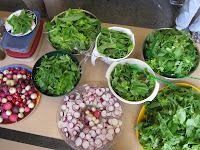The SPEC School Gardens Project began as a pilot in two schools, in March 2009, reaching 190 students. By April 2012 the project had grown to 7 schools, and over 1050 students have been involved by building, planting, learning, maintaining, harvesting and eating the fruits of their labours. The project has received over $20,000 in grants, donations and other support from various sources, as well as in kind-donations, and time from school PAC's, parent volunteers, teachers, students, local businesses and foundations. The purpose of this site is to share some of the stories and images from the project, to share information, and to inspire more schools to get involved in creating, growing and harvesting their own food gardens. The site will document some of the events of the past years, then become an ongoing blog of activities by the school gardens project team.








